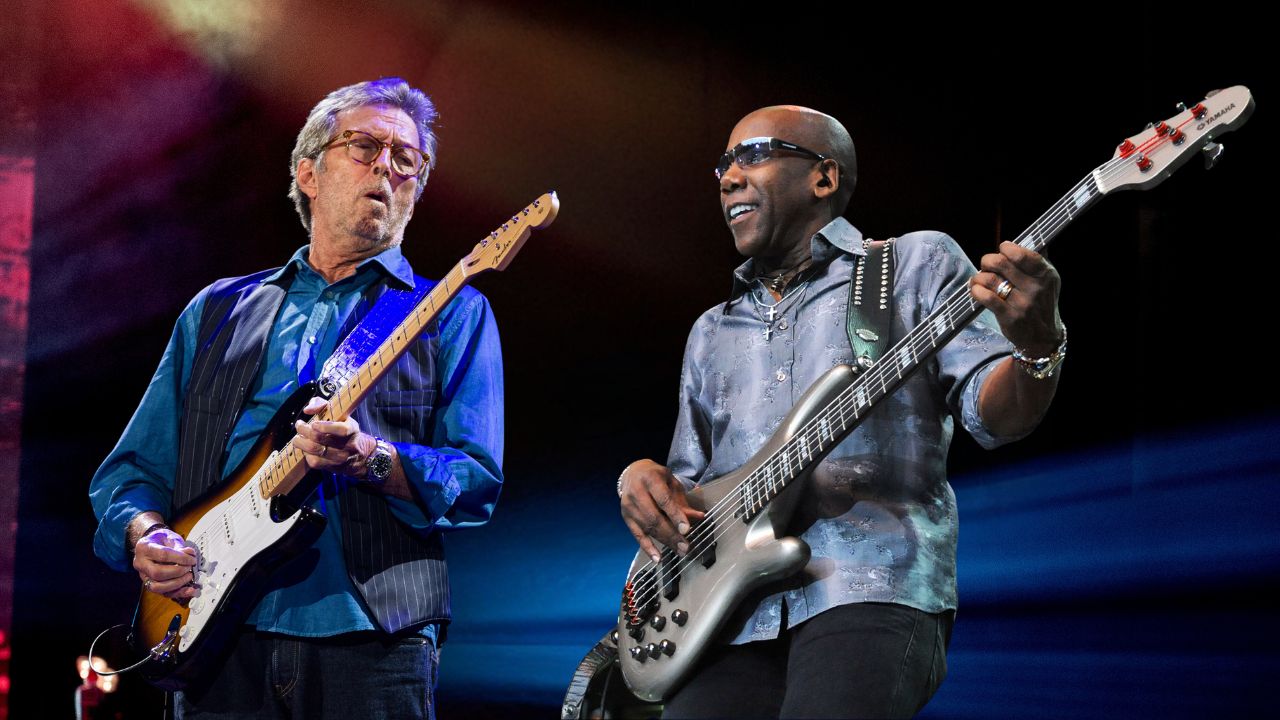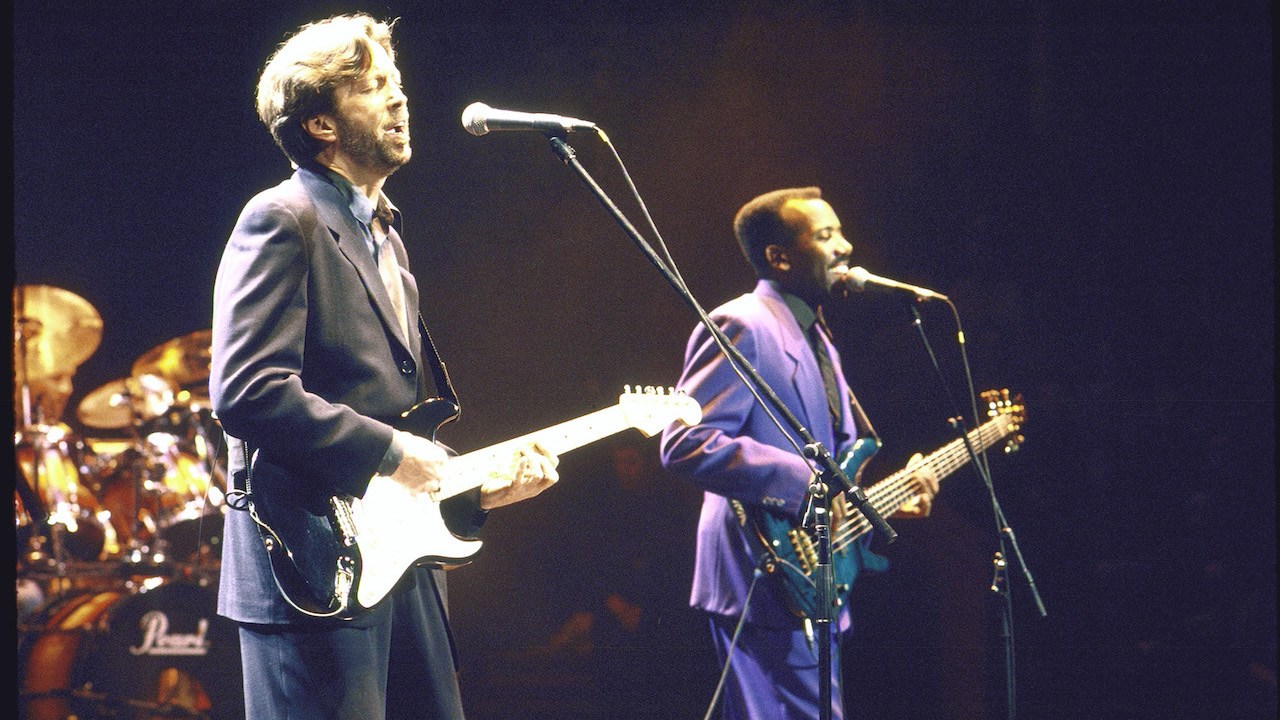“I knew Eric was going to put his guitar on later, so the bass fills were like telegraphed messages”: Listen to Nathan East’s fill-laden bassline on Eric Clapton’s Change the World
Nathan East recorded with his Yamaha Signature 5-string direct through a custom DI box

“Bass players have the best seat in the house,” Nathan East once told BP. When you consider the up-close-and-personal views he’s had of such artists as Eric Clapton, Phil Collins, Michael Jackson, and Daft Punk, it’s easy to understand what he means. Of course, East – famous for his big smile and even bigger bass pocket – is really talking about the role of the bass guitar.
“We bassists are equally involved in the rhythm and the harmony, and we have the ability to support as well as to step out front.” A prime example is his bassline on Change The World, the Babyface-produced Eric Clapton chart-topper from 1996’s Phenomenon soundtrack.
The real phenomenon on Change The World is that each part was overdubbed, yet the tune sounds remarkably live. Interestingly, East recorded his bass part only to John Robinson’s drum track, which means Clapton and Babyface created their guitar parts around East’s fill-laden bassline.
“I tried to lay the foundation while staying out of the way of the vocal melody, which I was imagining in my head,” said East. “As for the fills, having played with Eric for so long, I tried to envision the interplay that would happen between us if we were onstage. I knew he was going to put his guitar on later, so the fills were like telegraphed messages saying ‘hello!’”
A closer look at Change the World reveals it to be an E blues that moves to the relative minor for the chorus. East begins sparsely during the acoustic guitar intro, adding upper-register notes, bent false harmonics, and natural harmonics. “Those were inspired by Chuck Rainey's fills on Roberta Flack's Reverend Lee, as well as by Jaco's false harmonics on Weather Report's Birdland.”
For the first verse, East pedals a low E, a common tone for the moving chord progression, while continuing to add upper-register notes in the vocal spaces. He adds motion as the first chorus begins, but holds back somewhat to allow the track to build. During the four-bar interlude, East returns to the open E pedal.
The second verse begins at bar 38, thrust by John Robinson's full kit and East's corresponding groove. “I wanted to set up a counter-pattern to John's kick as opposed to matching it. We'd tried quarter-notes and eighth-notes, but neither felt right. The counter-line really kept the forward motion going in a fresh way.”
Get The Pick Newsletter
All the latest guitar news, interviews, lessons, reviews, deals and more, direct to your inbox!

East varies his pattern slightly as the harmony moves to the IV chord, “to keep things interesting. That can be difficult and challenging when you're dealing with simple changes.” For the chorus, East picks up steam via a Jamerson-like figure and a descending melodic fill. “I was hoping that fill wasn't on the verge of being too much, but that's where my heart was coming from, so I went with it.”
In the final chorus East unleashes a Pino Palladino-inspired descending melodic fill over the C# chord. After full-blown repeated vocal phrases, the track winds down, heading for an acoustic guitar outro.
In the last three bars, East traces the chords’ actual roots, pausing briefly to add a signature harmonic and fill. He summed up, “The song's key of E major allowed me to leap around and fill while keeping the foundation on the open strings.”
East used his Yamaha Signature 5-string and recorded direct through his custom DI box. “It’s basically a huge transformer that’s great for bass. It was built for me by an A&M engineer named Bene May some years back.”
Chris Jisi was Contributing Editor, Senior Contributing Editor, and Editor In Chief on Bass Player 1989-2018. He is the author of Brave New Bass, a compilation of interviews with bass players like Marcus Miller, Flea, Will Lee, Tony Levin, Jeff Berlin, Les Claypool and more, and The Fretless Bass, with insight from over 25 masters including Tony Levin, Marcus Miller, Gary Willis, Richard Bona, Jimmy Haslip, and Percy Jones.
“I asked him to get me four bass strings because I only had a $29 guitar from Sears”: Bootsy Collins is one of the all-time bass greats, but he started out on guitar. Here’s the sole reason why he switched
“I got that bass for $50 off this coke dealer. I don’t know what Jaco did to it, but he totally messed up the insides!” How Cro-Mags’ Harley Flanagan went from buying a Jaco Pastorius bass on the street to fronting one of hardcore’s most influential bands












